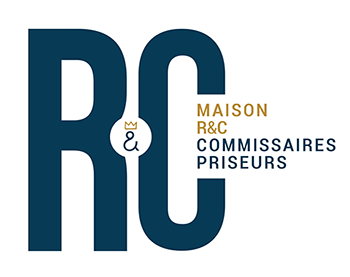Lot n° 205
Estimation :
40000 - 60000
EUR
Result without fees
Result
: 100 000EUR
Henri Pierre DANLOUX (Paris 1753 - 1809)
Portrait... - Lot 205 - Maison R&C, Commissaires-Priseurs Associés
Henri Pierre DANLOUX (Paris 1753 - 1809)
Portrait of Amable Hugues Anne Hyacinthe de Fontanges
On its original canvas
76 x 64 cm
Signed lower left and traces of date Danloux fac- bat- / 1795
Provenance :
Always remained in the family,
Collection of Madame Madeleine Marie Antoinette Regnault de La Motte, née de Fontanges, in 1910 (after Portalis).
Bibliography :
R. Portalis, Henri-Pierre Danloux peintre de portraits, Paris, 1910, p. 259, reproduced pl. 33.
Born in Santo Domingo, Count Amable de Fontanges (1784 - San Sebastián 1826), knight of the Legion of Honour and of the Order of St Louis, had a military career as governor of the island of Java, captain of the Tyrol expedition led by Bonaparte, and then, under Louis XVIII, colonel during the campaign to restore King Ferdinand VII to Spain.
His father François, Viscount de Fontanges, former major general of the troops and militia of Saint Domingue, was appointed colonel during the American War of Independence after being wounded during the attack on Savannah in Georgia. In 1982, he returned to Santo Domingo as a lieutenant colonel. At the beginning of the Revolution in 1789, he was promoted to the rank of marshal de camp and until 1794 kept his post in the island, trying to maintain order; then he returned to Europe and entered the service of Spain. Louis XVIII rewarded him for his generosity by appointing him lieutenant general of the armies, commander, then grand-cross of the order of Saint Louis.
His mother, born Caroline Lefèvre (1767-1847), was the daughter of a captain of the militia of Saint-Domingue. During the Emigration she arrived in London with her son. They belonged to the Creole society, a separate group of emigrants from the Revolution composed of settlers from Saint-Domingue. The Fontanges couple divorced in 1795 and Amable, aged 12, went to join his father who had become commander of the southern part of Saint-Domingue.
It was during this period in London that this portrait was painted with an English touch. Our painting shows the child in a three-quarter view. The artist renders the Count's youthful figure wonderfully, with delicate blonde curls structuring his face. He is wearing a hat, an equestrian outfit with delicately textured white collars and a riding crop under his arm. He has just left the riding school in the background of the composition. The diary of Henri-Pierre Danloux kept by the artist and his wife, and partially transcribed by Portalis, mentions this lovely portrait: "My husband began the portrait of the little Fontanges in bust form. He stayed until noon. The mother and the aunts came. They are from Santo Domingo. The boy told us that he was going to leave with his father to join the service of the King of Spain" (R. Portalis, op. cit., p.259). It is also reported that Madame de Vigniers, who came from a family of large Dominican landowners and became an important London figure, "praised the portrait of the little Fontanges to her husband. She would later commission the portrait of her son (Anonymous sale, Paris, Christie's, 20 June 2018, no. 48, reproduced) as well as that of her daughter. The portrait of the young count had first been painted, as well as that of her mother, by the painter Antoine Vestier (A.-M. Passez, Antoine Vestier, Paris, 1989, reproduced, fig. 63 and fig. 64).
A renowned portraitist, Henri Pierre Danloux had Jean-Baptiste Lepicié and Joseph Vien as his teachers. He painted this portrait of the young Fontanges in the English style during his stay in the United Kingdom (1792-1801), where he had taken refuge from the French Revolution. It was in this context that he met the circles of Emigration, of which the Count's family was a part. It was in these circles that the painter found most of his models.
The genre of child portraiture really took off at the end of the 18th century, with the emergence of a new consideration for the child, particularly following Jean-Jacques Rousseau's treatises on education. It developed particularly in France and then in England (as evidenced by the famous paintings of Elisabeth Vigée-Lebrun and Joshua Reynolds). Other portraits of adolescents were painted by Danloux during this period, such as that of Rose Arnould (see R. Portalis, op. cit., reproduced on p. 271). Our painting is distinguished by its extremely light touch, which goes beyond the usual conventions of portraiture and thus perfectly renders the child's ardour; as if he were surprised in his daily activity.
My orders
Sale information
Sales conditions
Return to catalogue

